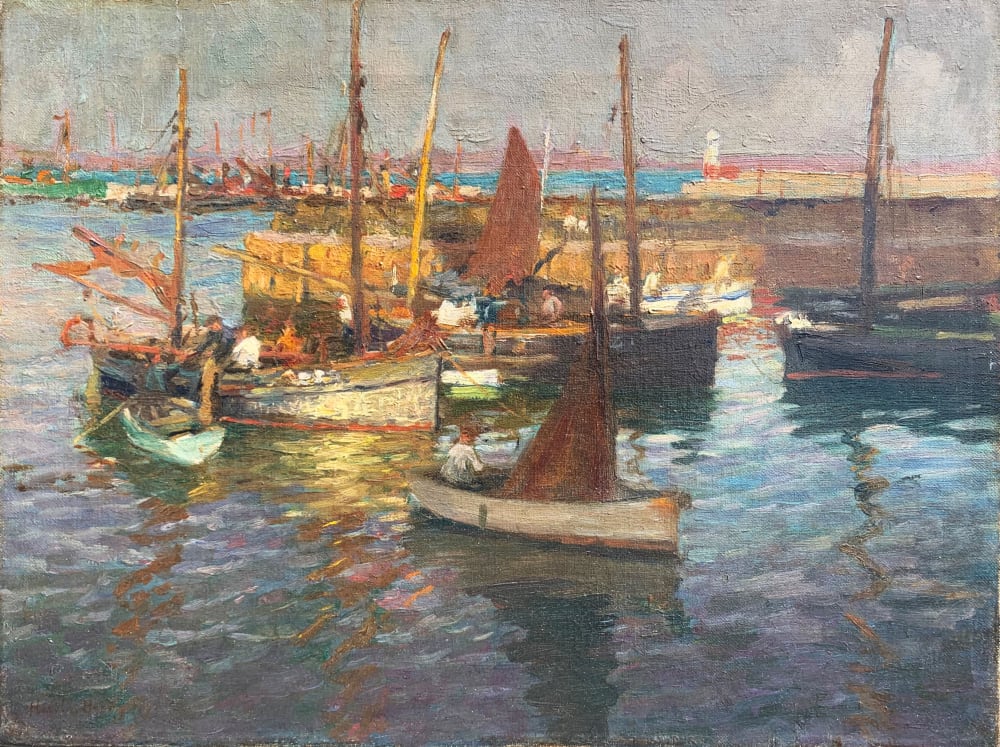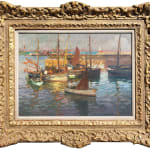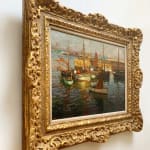
Bringing in the catch, Newlyn Harbour, by Harold Harvey
Harold Harvey 1874-1941
Framed: 48.3 x 58.4 cm (19 x 23 ins)
Further images
Harold Harvey was Penzance born and bred and is undoubtedly the most gifted and successful home-grown talent of the Newlyn School. Harvey studied under Norman Garstin before venturing to Paris where he entered the Academy Julian in 1894 and like Henry Scott Tuke, studied under Jean-Paul Laurens. Two more Parisian Ateliers followed and Harvey was much influenced, like his Newlyn predecessors, by his en plein air training in Paris and the principles of Bastien Lepage. In his early career, his palette and brushwork reflect that training and the example set by the father of the Newlyn School, Stanhope Forbes. But in the years leading up to World War 1 Harvey’s palette brightens and his handling of paint loosens up becoming freer and much more impressionistic. Bringing in the catch, Newlyn Harbour is such a work and depicts part of the Newlyn fishing fleet with the south pier and its lighthouse completed in 1886, in the distance, and the Old Quay, which dates from 1435, behind the foreground boats. The work was executed in 1909 and the composition focuses upon a sailing trawler off-loading its catch onto smaller vessels. Unloading the boats, Newlyn Harbour painted in 1906 (Bonhams June 2007) makes an interesting comparison insofar as it concerns a similar activity but clearly demonstrates Stanhope Forbes’ influence on Harvey’s palette and brushwork. By 1909 Harvey was finding a new path.










